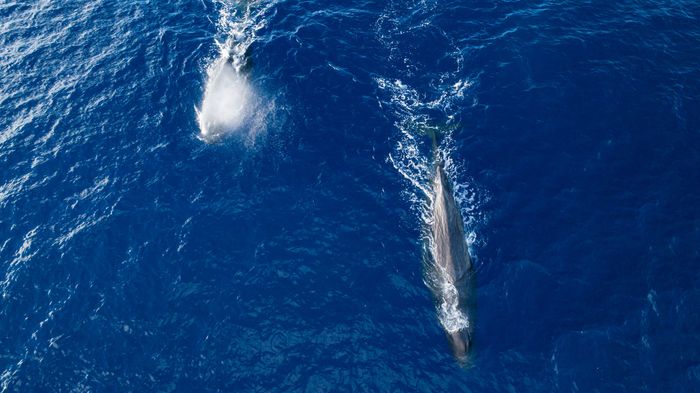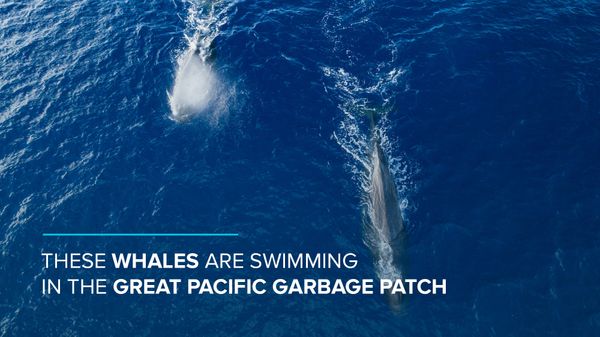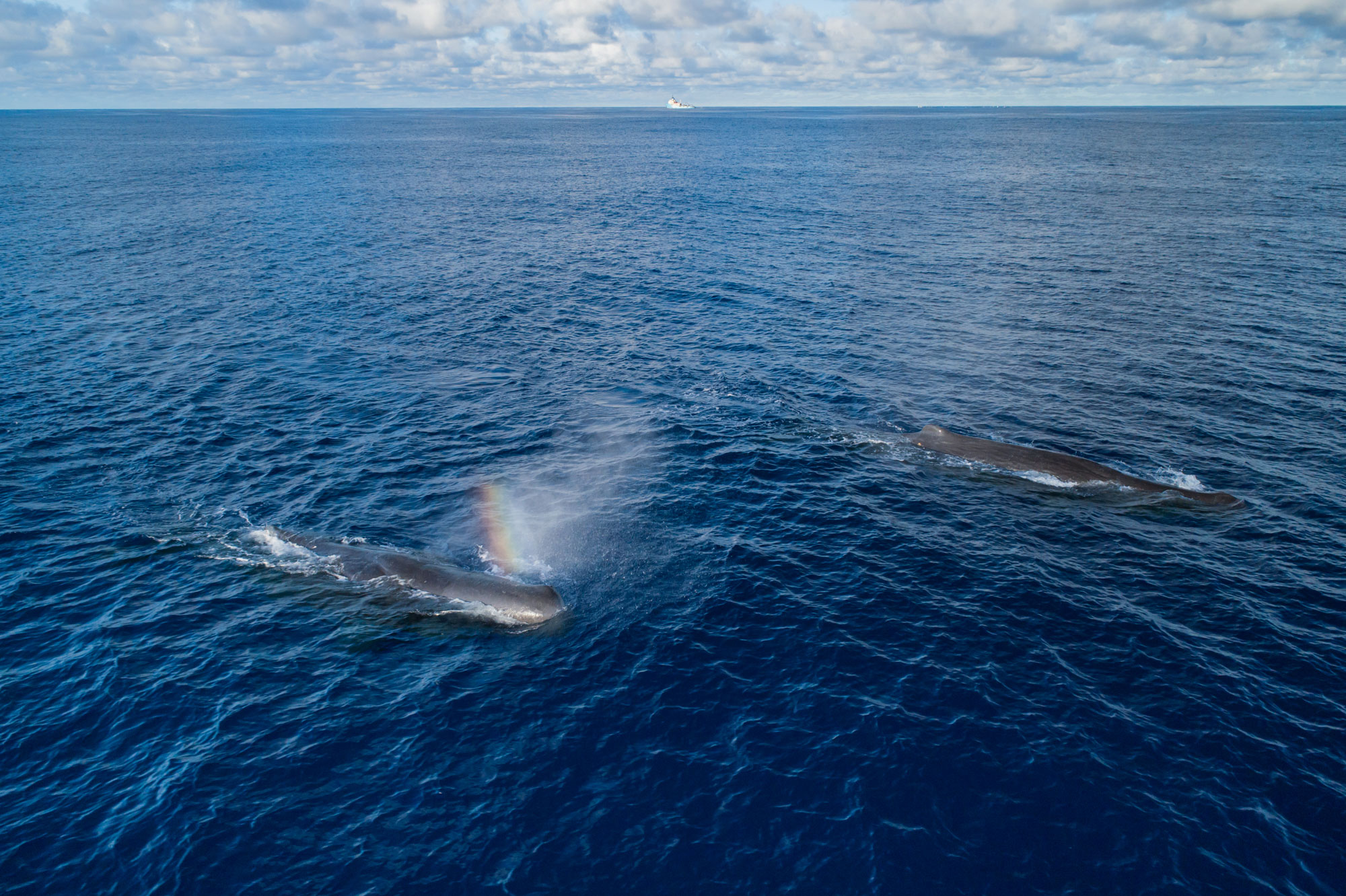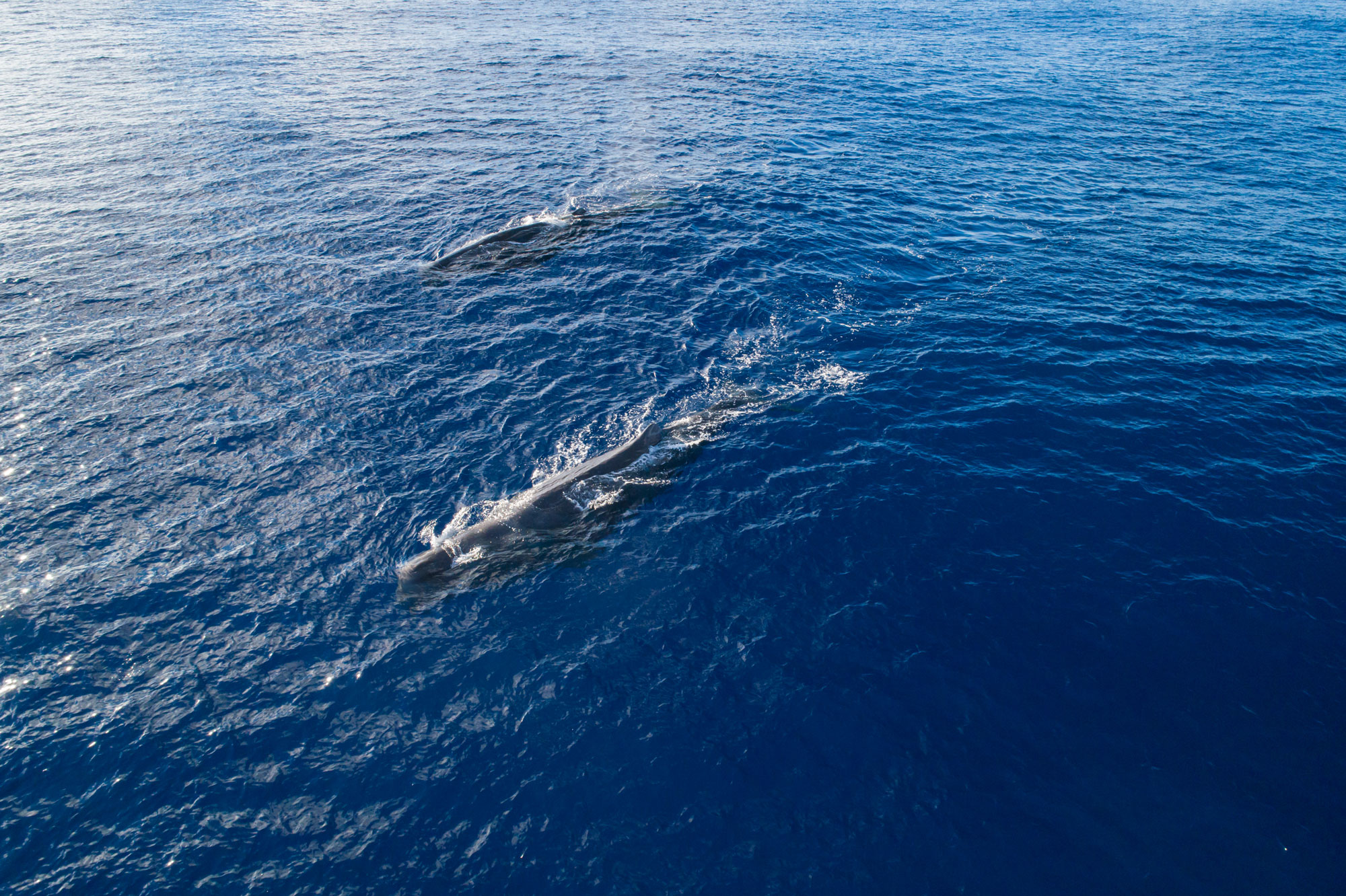
Whales likely impacted by Great Pacific Garbage Patch
Back to updatesA scientific note we published on April 09, 2019 reports the records of whales within the world’s largest accumulation of floating ocean plastic: the Great Pacific Garbage Patch.
Over the past few weeks, two whales beached with large amounts of plastic in their stomachs making news headlines, one in the Phillippines and the other in Italy. On April 9, 2019, we published a note in the journal Marine Biodiversity describing sightings of whales within the Great Pacific Garbage Patch (GPGP) – the largest accumulation zone for plastics in the world’s open ocean about halfway between Hawaii and California. This work was first presented at the Society for Marine Mammals biennial conference in December 2017 in Halifax, Canada providing evidence of cetaceans being exposed to high concentrations of plastic.

During our Aerial Expedition in October 2016, whales were spotted by our observers aboard our Hercules C-130 aircraft. During our flights over this very remote area, we observed at least 14 whales, including four sperm whales, three beaked whales, and two baleen whales. We recorded a sperm whale mother with a calf, providing evidence that the GPGP is being used by these magnificent animals at various life stages. Whale population structures and movement patterns in this area are not well known and it is unclear whether they migrate through the GPGP, are always present or both.
As part of the main objective of this expedition, we also registered 1280 surface drifting plastics, such as fishing nets, ropes, floats, and fragmented debris. This equates to a ratio of about 90 objects per whale sighted. Plastic items were occasionally seen in close proximity (i.e. a few meters) to the observed animals, thereby clearly posing entanglement and ingestion risks.


One of the findings from our 2018 paper on the Great Pacific Garbage Patch showed 46% of the plastic found in the patch are fishing nets. Often referred to as ‘ghost nets’, these are lost and discarded fishing nets that can continuously trap marine wildlife in a process known as ‘ghost fishing’. The durability and strength of entangled fishing nets can cause chronic injury, starvation and general debilitation of entangled animals, often resulting in death. Fishing gear can also be heavy, often drowning exhausted animals including whales, seals, and sea turtles.
Whales, particularly, are known to ingest plastics, mistaking them for food and /or consuming them incidentally while feeding on prey aggregated with synthetic particles. The size of the plastic items ingested depends on the feeding behavior of the species. Filter-feeding baleen whales are particularly susceptible to accidentally consuming small plastic particles known as ‘microplastics’ (< 5 mm) that are a health hazard to them. Sperm and beaked whales, on the other hand, can ingest large plastic objects such as plastic bags and fishing nets (as was mentioned at the start of this article).

Ingesting large quantities of plastic can lead to an animal’s death due to gastric rupture and/or obstruction. Jacobsen et al. (2010) examined two sperm whales stranded along the California coast and extracted 24.2kg and 73.6 kg of plastic debris from their stomachs. Ingested items included fishing nets and ropes made of floating material. The researchers suggested that the ingestion of these objects occurred within the North Pacific subtropical gyre, which is made plausible by our observations.
Our scientific note demonstrates the potential exposure of multiple cetacean species to the high levels of plastic pollution within oceanic ‘garbage patches’.
In addition to the sightings during The Ocean Cleanup’s Aerial Expedition (the subject of these notes), 38 whale sightings were documented during System 001’s first mission deployment in the GPGP from October – December 2019 (results yet to be published), confirming the risk of these species being exposed to increased plastic concentrations.

These sightings are a reminder of why we do what we do and further research evaluating the effects of ocean garbage patches on the world’s cetacean populations is needed. Looking ahead, The Ocean Cleanup will continue environmental monitoring while in the GPGP and will share new information to build upon our understanding of this complex problem.

